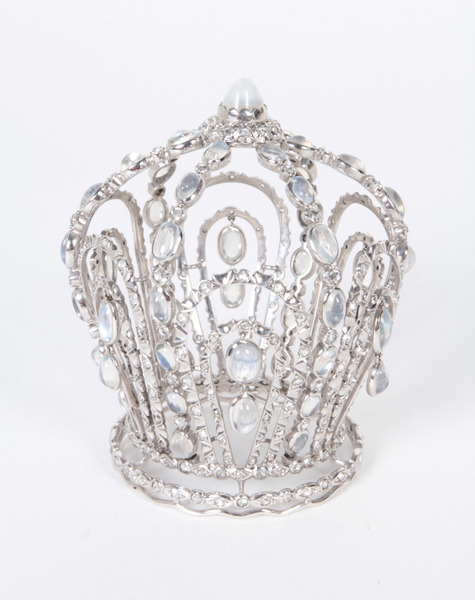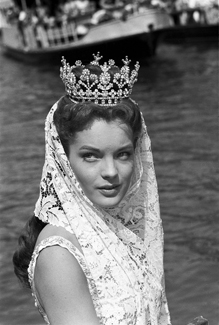Product Description
Bismarck Family Crown – House of Koch, Chignon crown, Moonstones and diamonds set in an elaborate platinum mount, original leather box, c. 1900



BISMARCK FAMILY CROWN
HOUSE OF KOCH Germany
Chignon crown c. 1900
Moonstones and diamonds set in an elaborate platinum mount, original leather box
The renowned “House of Koch” made this remarkable bejeweled chignon for the Bismarck family of Lauenburg, Germany. It is an early example of exquisite work in platinum and is set with cabochon moonstones and rose cut diamonds. The jewelry firm, known as the “House of Koch” was founded by Robert and Louis Koch in 1879 in Frankfurt, Germany with a branch in Baden-Baden. By 1883, the jewelers had earned the coveted title of Jeweler of the Court of Frankfurt and crafted jewels for many European Royal families. In fact, their jewels were famous across Europe, and their fashionable styles were worn in the courts of several European royals including the King of Italy and the Czar of Russia. By the time Robert Bosch had assumed control of the firm in 1938, the Koch family was forced to “Aryanize” their jewelry house. It was common during the late nineteenth Century for prestigious families to retool old antique heirloom pieces to bring them up to contemporary fashion standards and since this chignon has characteristics of both the 18th and the 19th Century jewelry, it was likely made from older pieces owned by the Bismarck family. The company closed doors in 1987 and jewels from the great time of the House of Koch are very much sought after in today’s antique jewelry market.
Bismarck Family Crown – House of Koch, Chignon crown, Moonstones and diamonds set in an elaborate platinum mount, original leather box, c. 1900
Jean Schlumberger for Tiffany & Co. “Berry brooch” 18K yellow gold set with 40 oval cut demantoid garnets (approx. 9 carats TW /G.I.A. certificate) and 7 small oval cabochon Persian turquoise stones, Signed: Tiffany, Schlumberger, 18K, c. 1968
Illustrated: (“Bejewelled by Tiffany 1837-1987”, Clare Phillips, page 279 (Vintage Tiffany Blue Book 1968-1969, ruby version of this brooch priced at $1,475)
